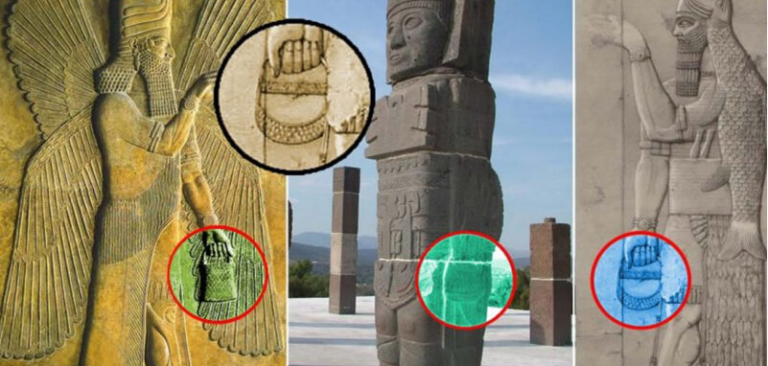At Sumerian sculptures and bas-reliefs from 6,000 BC (the Anunnaki carried it), and in the Göbekli Tepe temple from 1000 BC. It is borne by Mesoamerican (Olmec, Toltec, Aztec) and Australian gods. According to its symbology, it may represent a global standard weight measure or a piece of sophisticated technology used by extraterrestrial gods.
The Sumerians began their civilization about 4,500 BC. They portrayed the Anunnaki with weird objects like a pine cone, a “wristwatch,” and a peculiar satchel. Several pictographs depict a winged deity holding a pine cone and the divine purse.
Other representations include Adapa, Dagon, or the fish-god Oannes holding it. This aquatic deity created civilizations according to Mesopotamian mythology. Sculptures from Mesoamerican cultures show the same item.
The Olmecs at La Venta in Mexico are the most famous Mesoamerican example. The Anunnaki deity Quetzalcoatl is portrayed in stone with the same bag of gods. It dates from 1750 BC.
Read more: Deshi News Post
Ask me anything
Explore related questions

